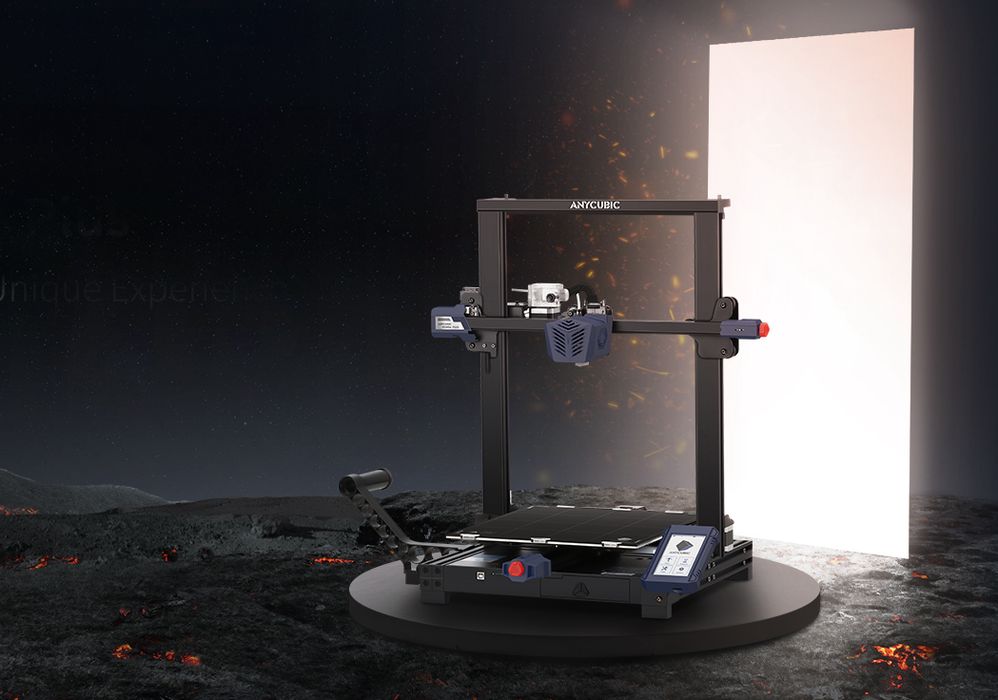
SPONSORED CONTENT
Anycubic announced a new entry into their Kobra desktop 3D printer series, the Kobra Plus.
Previously we performed a hands on test of the Kobra desktop 3D printer, so we were quite interested to see what the Kobra Plus has in store for 3D printer operators.
The Kobra Plus is an inexpensive desktop open gantry model, equipped with a single 1.75mm filament extruder.
Let’s look at the basic features, and then explore the more advanced capabilities of the Kobra Plus 3D printer.
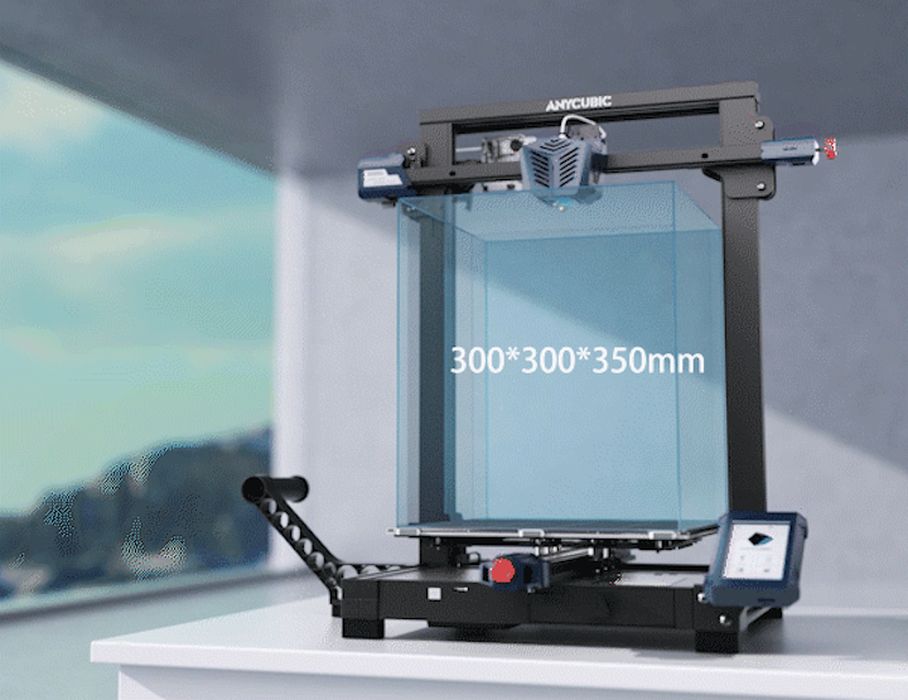
First, the device has an incredibly large build volume for a desktop device at this price level. You can 3D print objects as large as 300 x 300 x 350 mm, which is more than three times the build volume of typical desktop 3D printers that fall into the 200 x 200 x 200 mm range.
The Kobra Plus uses a Bowden extrusion approach, where the extruder motor is separate from the toolhead. Filament is pushed by a dual-toothed gear system through a tube to the toolhead, which contains the hot end. This approach significantly lightens the weight of the moving toolhead, which as you will see later is quite important on the Kobra Plus.
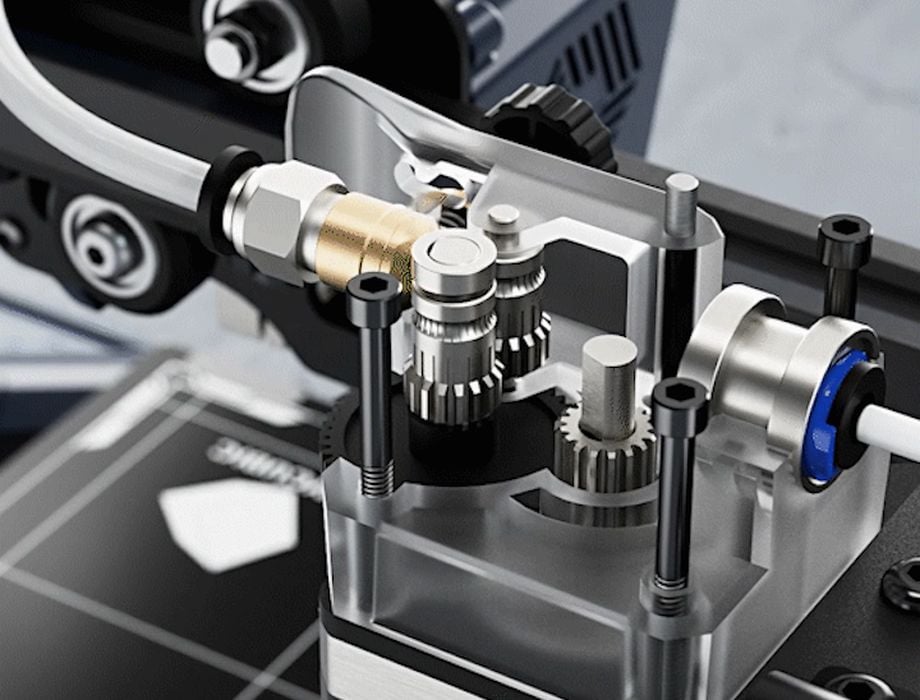
The build surface of the Kobra Plus is a bit unusual. While most devices these days use a magnetically attached spring steel PEI-coated plate, the Kobra Plus uses a textured carborundum glass plate. The glass plate ensures that the build surface is perfectly flat on each print, unlike the bendy steel plates on other equipment.
The plate works very easily: while heated it adheres very tightly to most 3D print materials, but when it cools the prints easily pop off.
There’s also a very useful filament-out sensor, which detects when there is no more material to print. This prevents print failures as it pauses the print job for the operator to mount a new spool of filament. The job then resumes and completes as if nothing was wrong.
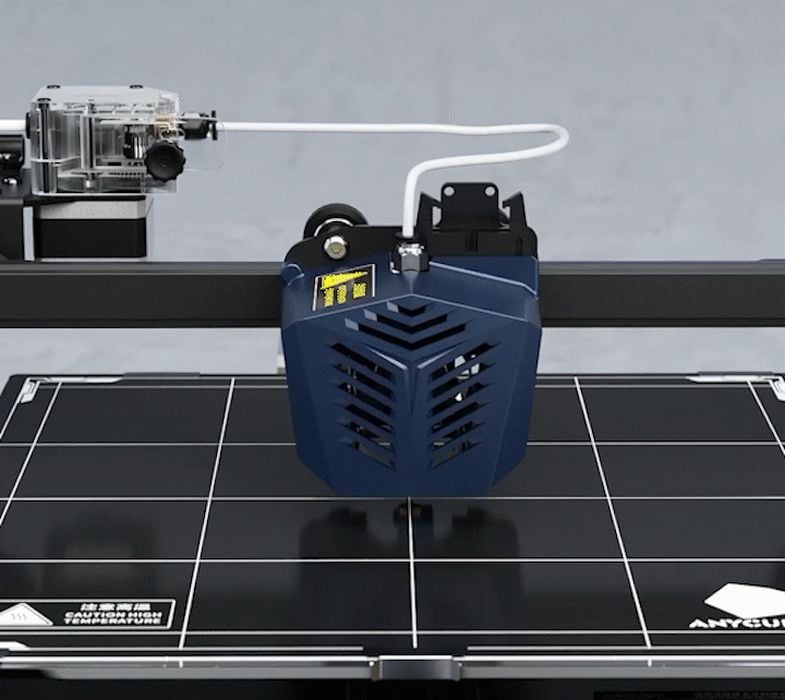
One of the more advanced features of the Kobra Plus is a new advanced leveling system Anycubic has named “LeviQ”. This process involves precisely measuring 25 points (5 x 5) on the print surface to determine how to compensate the height during the critical first layer of printing. LeviQ ensures your first layer will almost always work properly, and it’s completely automatic.
The print speed of the Kobra Plus is much higher than the original Kobra machine. Anycubic said the Kobra Plus’ print speed is typically a very fast 80-100mm/s. This could mean that the Kobra Plus print jobs can be as much as 2X faster than typical machines, although that depends on the specific 3D model being printed.
How has Anycubic achieved these faster print speeds? Recall that the machine uses a Bowden extrusion system. This lightens the weight of the toolhead, making it easier for the motion system to switch directions as there is less mass being moved.
Another speed-up feature is the 45W hot end heater. This can quickly heat up filament as it passes through the hot end, meaning you can push the filament more rapidly and thus print faster.
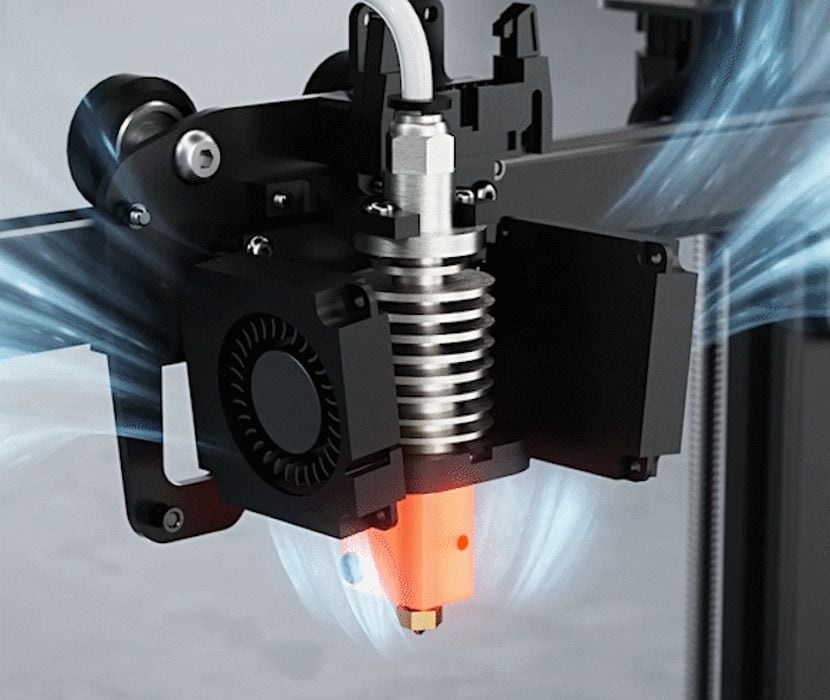
Finally, they’ve included two 6000 RPM cooling fans that can very quickly cool down freshly printed material. This is critically important for higher speed printing because it ensures the previous layer is completely solid before starting the next layer. If this wasn’t present, you’d risk having the print slump when printing at high speed.
We are currently testing the Anycubic Kobra Plus 3D printer and hope to have a very complete review published very soon.
One more thing: Anycubic has also announced a new series of silk and matte filaments, which have some interesting colors. We are currently testing these, too, and will have some images to show you soon.
Anycubic also announced a new line of filaments to coincide with the Kobra Plus release. Their new Silky and Matte filaments will be available in multiple colors, and I’m quite interested to see these materials.
The Anycubic Kobra Plus will be for sale on June 15th at 10AM ET / 1600h CEST on Anycubic’s online store, Amazon, eBay and AliExpress.
Anycubic will offer an early-bird price of only US$399 for the first 2,000 devices sold, which is a ridiculously low price for such a large and speedy machine. After the first 2,000 are sold, the price jumps to US$499, which is still a good deal for this machine’s power.
Product Links:
- US$399 on Anycubic’s official website
- US$399 on Amazon
- US$399 on Aliexpress
- US$399 on eBay
- Get notification when available
